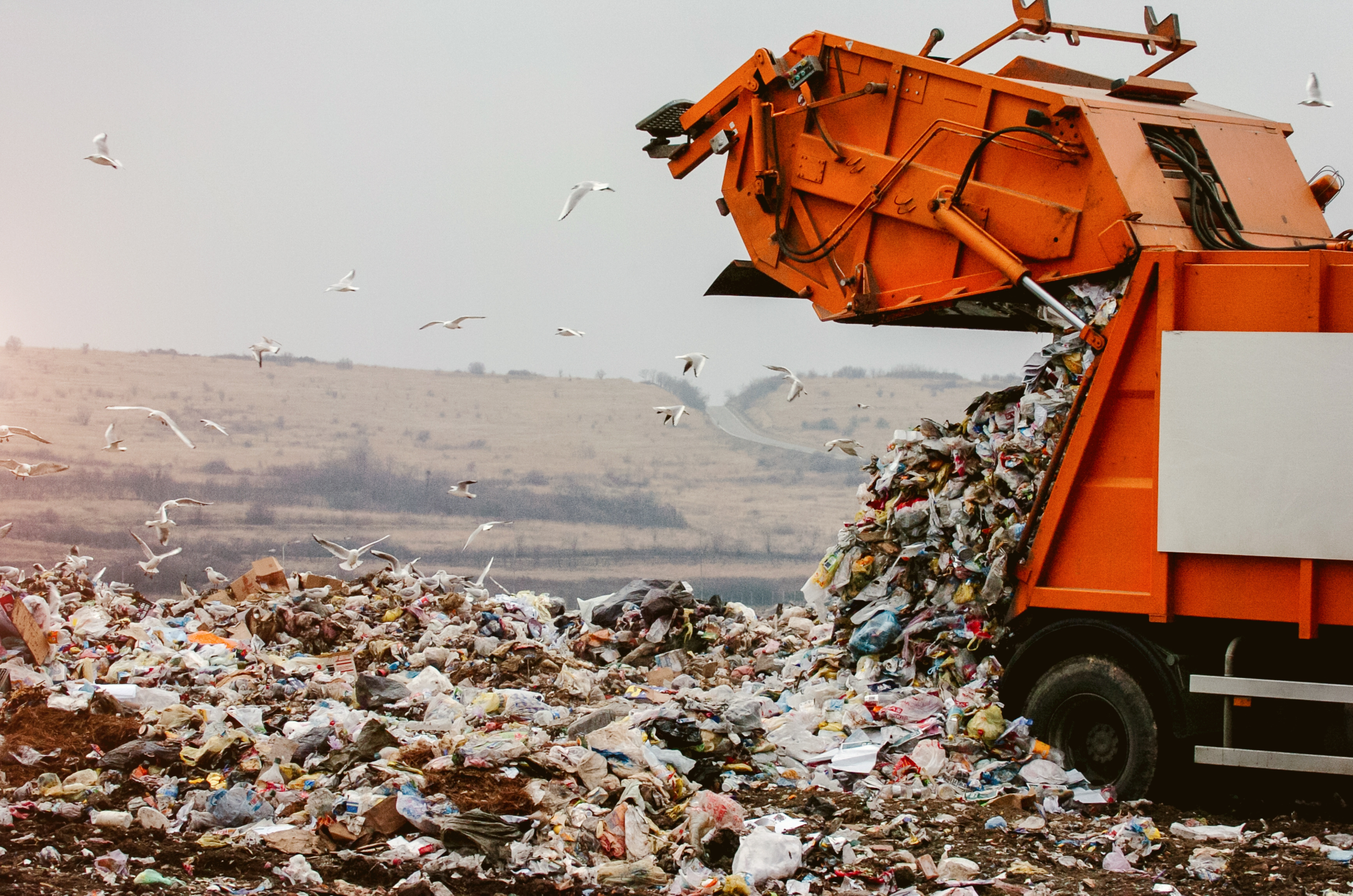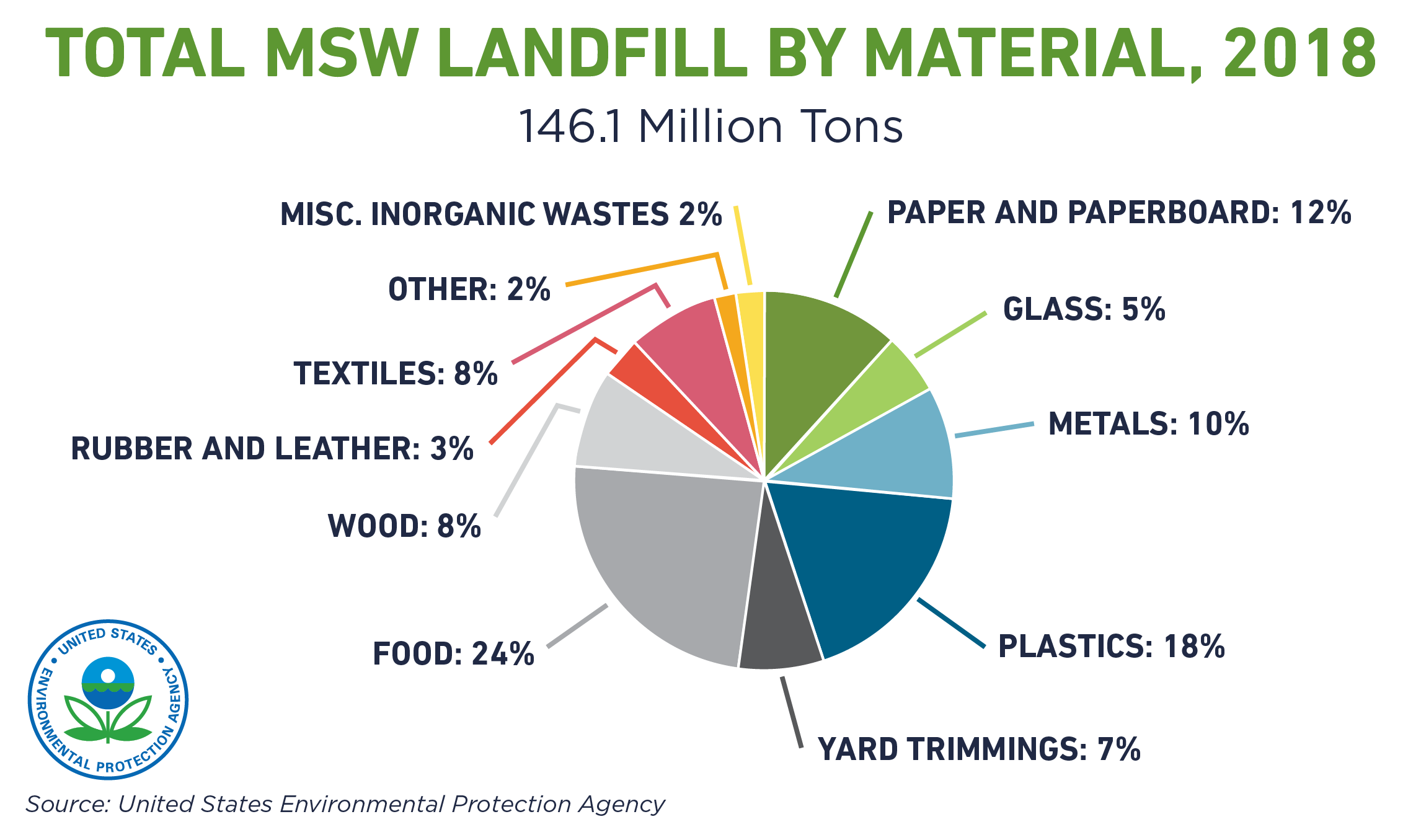What Happens to Food Waste in Landfills—and How Composting Can Combat Climate Change
Posted by Eco-Products on May 16th 2025

Each time we scrape our leftovers into the trash or toss out wilted spinach, that wasted food often ends up in a landfill. In the U.S., food waste is the single largest category of material sent to landfills, making up about 24% of municipal solid waste. That means we’re not only throwing away food, but also wasting the precious resources used to grow, harvest, produce, and transport it. Recognizing the role food waste plays in our daily lives is the first step toward making smarter choices that help reduce waste and combat climate change.
Landfills Aren’t Designed for Decomposition

Many people assume that because food is organic matter, it will naturally break down in a landfill. Unfortunately, that’s not the case. Modern landfills are designed to contain waste in the most effective manner to maximize space, instead of being designed to consider decomposition. Landfills are considered “dry tombs”, because each layer of trash gets compacted into tight layers, sealing off the contents from air and moisture. This creates what is called an “anaerobic environment”, or one without oxygen, which drastically slows down the decomposition process. Because of the lack of oxygen, food waste can remain intact in landfills for decades. When food eventually begins to break down in these conditions, it produces methane, a potent greenhouse gas that is more than 80 times stronger than carbon dioxide over a 20-year period. According to the EPA, food waste is responsible for 58% of methane emissions from municipal solid waste landfills. That makes it a major contributor to climate change, and one of the most tangible ways we can take climate action.
Composting as a Solution for Wasted Food
Thankfully, there are many proactive steps to take before sending wasted food to landfill. The EPA’s Wasted Food Scale helps outline various pathways for wasted food. One of these methods is composting. Composting food waste plays a significant role in mitigating the impacts of climate change by reducing methane emissions from landfills, sequestering carbon, uniting communities, and enhancing soil health. In fact, composting food instead of sending it to landfills reduces the greenhouse gas emissions associated with the disposal of that food by 50%! Composting is an aerobic process, meaning it happens in the presence of oxygen. This allows microbes, heat, and moisture to break down food, yard trimmings, and other organic materials. The end result is finished compost—a nutrient-rich soil amendment that improves soil health, supports plant growth, and helps store carbon in the ground.
Actions You Can Take to Reduce Food Waste
The good news? There are simple actions we can all take to keep food waste out of landfills:
- Reduce waste at the source by planning meals, cooking only what you can eat, storing food properly, and eating leftovers
- Donate extra food to local organizations when possible
- Compost at home or find out if your city offers curbside or drop-off composting programs
- Choose certified compostable packaging when available and when composting infrastructure exists in your area
Food is meant to nourish us—not sit in landfills producing methane. By rethinking how we handle food waste, we can do our part to combat climate change and build healthier, more resilient communities.

